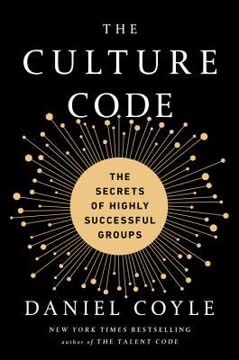Key Takeaways
1. Adopt a Relational Mindset to Connect with Students
"You are the designer, engineer, and contractor that builds a classroom climate."
Build meaningful connections. Developing strong relationships with students is crucial for their academic success and overall well-being. Teachers should prioritize getting to know their students personally, understanding their backgrounds, and showing genuine care and empathy. This relational approach creates a foundation of trust and respect, making students more receptive to learning and willing to take academic risks.
Personalize the learning experience. Implement strategies to make each student feel valued and understood:
- Learn and use students' names consistently
- Create "Me Bags" for students to share personal items and stories
- Share your own experiences and challenges
- Regularly check in with students about their progress and goals
By fostering these connections, teachers can create a supportive classroom environment where students feel safe, motivated, and ready to learn.
2. Foster an Achievement Mindset for Student Success
"If you want greater student achievement, change the student's experience at school."
Set gutsy goals. Encourage students to aim high by setting ambitious, seemingly impossible goals. This approach challenges students to push beyond their perceived limitations and fosters a growth mindset. Teachers should:
- Help students develop both long-term visions and short-term micro-goals
- Provide regular feedback and celebrate progress
- Teach students to view failures as learning opportunities
Cultivate grit and perseverance. Develop students' ability to persist through challenges by:
- Modeling resilience in the face of setbacks
- Teaching specific strategies for overcoming obstacles
- Celebrating effort and improvement, not just final outcomes
By instilling an achievement mindset, teachers empower students to take ownership of their learning and develop the skills necessary for long-term success.
3. Cultivate a Positivity Mindset to Transform Classroom Climate
"Positive affect in school contributes to more kindness, better health, increased participation, fewer absences, and greater achievement."
Boost optimism and hope. Create a classroom atmosphere that fosters positivity and belief in future success. Strategies include:
- Regularly sharing and celebrating student progress
- Teaching students to reframe negative situations
- Incorporating gratitude practices into daily routines
Build positive attitudes. Encourage students to develop a positive outlook on learning and life:
- Model and teach problem-solving skills
- Promote acts of kindness and service
- Help students develop a sense of personal responsibility
By cultivating a positivity mindset, teachers can create a more engaging and supportive learning environment that promotes both academic achievement and personal growth.
4. Create a Rich Classroom Environment for Optimal Learning
"Climate matters a great deal, and you influence how your students turn out more than you think you do."
Engage student voice and vision. Involve students in shaping their learning experience:
- Encourage students to share their opinions and ideas
- Incorporate students' interests and experiences into lessons
- Allow students to make choices about their learning
Establish safe classroom norms. Create a supportive environment where students feel comfortable taking risks:
- Develop clear expectations for behavior and respect
- Teach and model conflict resolution skills
- Celebrate mistakes as learning opportunities
By creating a rich classroom climate, teachers can foster a sense of belonging and engagement that supports student learning and growth.
5. Embrace an Enrichment Mindset to Enhance Cognitive Capacity
"I know brains can change. I can grow and change myself first. Then, I can build powerful cognitive skills in my students."
Manage cognitive load. Help students process and retain information more effectively:
- Break complex tasks into manageable chunks
- Use spaced repetition and retrieval practice
- Teach students metacognitive strategies for learning
Strengthen thinking skills. Develop students' ability to engage in higher-order thinking:
- Teach specific reasoning and problem-solving strategies
- Provide opportunities for collaborative learning and discussion
- Encourage students to question assumptions and think critically
By adopting an enrichment mindset, teachers can help students develop the cognitive skills necessary for academic success and lifelong learning.
6. Implement an Engagement Mindset for Active Learning
"I can and will engage with purpose every student, every day, every nine minutes or less, guaranteed."
Engage for maintenance and stress management. Keep students actively involved in learning:
- Use short, frequent activities to maintain focus and energy
- Teach stress-reduction techniques
- Incorporate movement and physical activity into lessons
Foster deeper buy-in. Help students see the relevance and value of their learning:
- Connect content to students' interests and real-world applications
- Use storytelling and personal anecdotes to make lessons memorable
- Provide choices and autonomy in learning activities
By consistently engaging students, teachers can create a dynamic learning environment that promotes active participation and deeper understanding.
7. Develop a Graduation Mindset to Ensure College and Career Readiness
"Focus on what matters. Be an ally to help students graduate college and career ready."
Support alternative solutions. Provide diverse pathways for student success:
- Incorporate arts and physical education into the curriculum
- Offer vocational and technical education options
- Develop partnerships with local businesses and colleges
Prepare for college and careers. Equip students with the skills and knowledge needed for post-secondary success:
- Teach study skills and time management strategies
- Provide opportunities for internships and job shadowing
- Help students navigate the college application and financial aid process
By adopting a graduation mindset, teachers can ensure that all students are prepared for success beyond high school, whether in college or the workforce.
Last updated:
Review Summary
Poor Students, Rich Teaching receives mostly positive reviews, with an average rating of 4.13/5. Readers praise its practical strategies for educators to help students achieve and build relationships. Many find it motivating and applicable across all levels. Some appreciate the author's blunt style and focus on teacher mindset. However, one critical review suggests the book offers superficial solutions and rehashes content from the author's previous works. Overall, it's recommended for educators seeking to improve their teaching and reach students from disadvantaged backgrounds.
Download PDF
Download EPUB
.epub digital book format is ideal for reading ebooks on phones, tablets, and e-readers.









